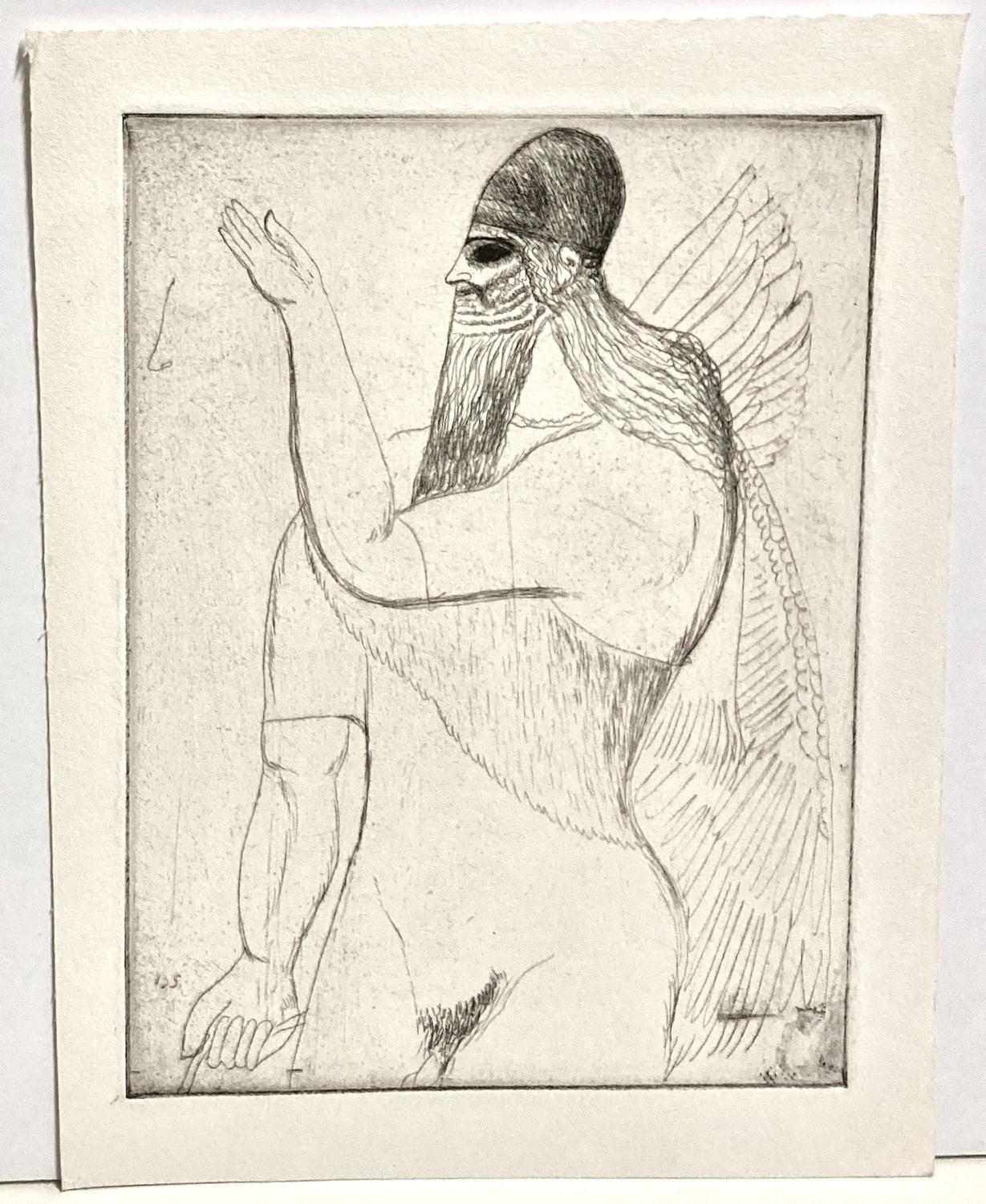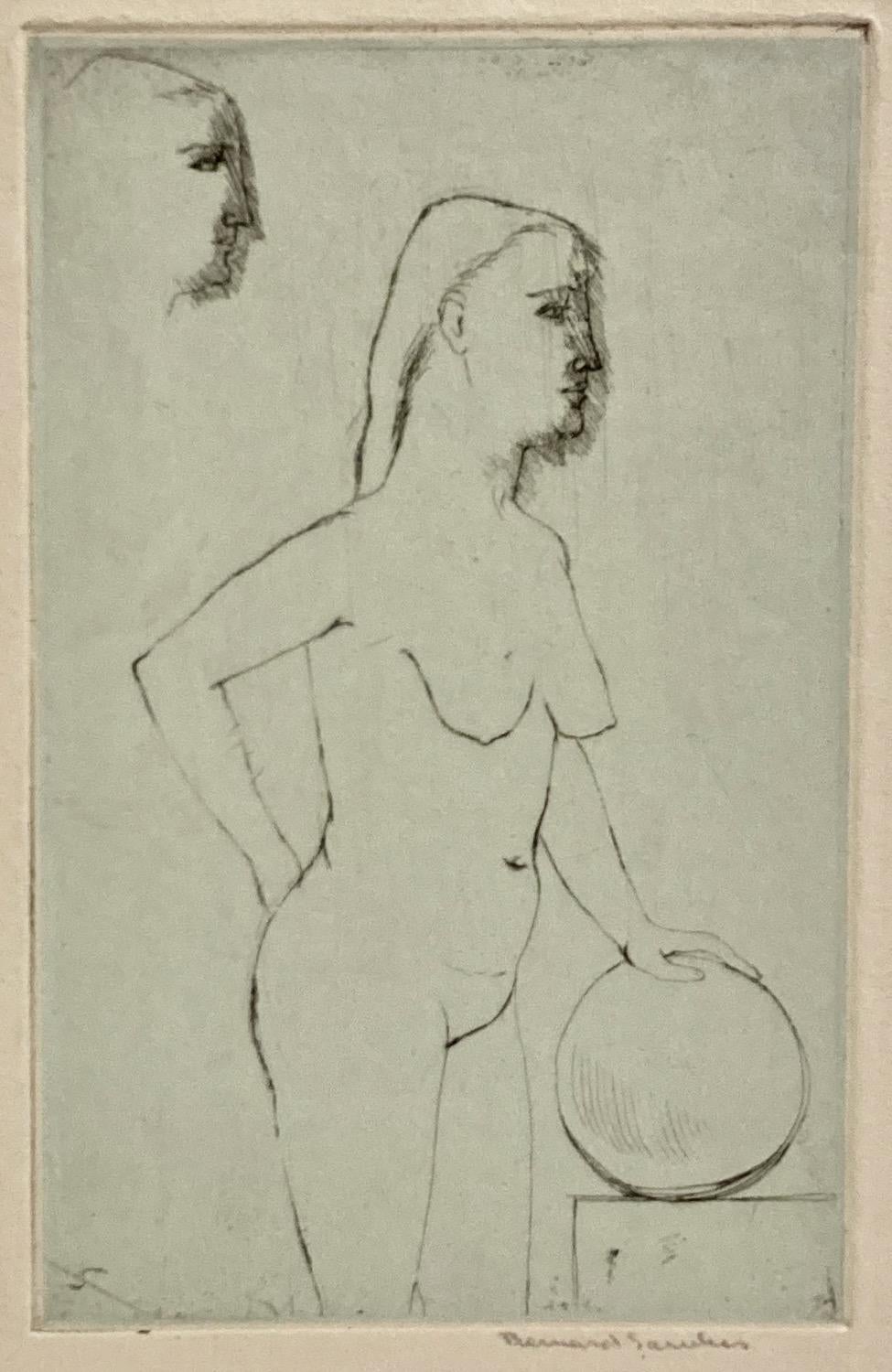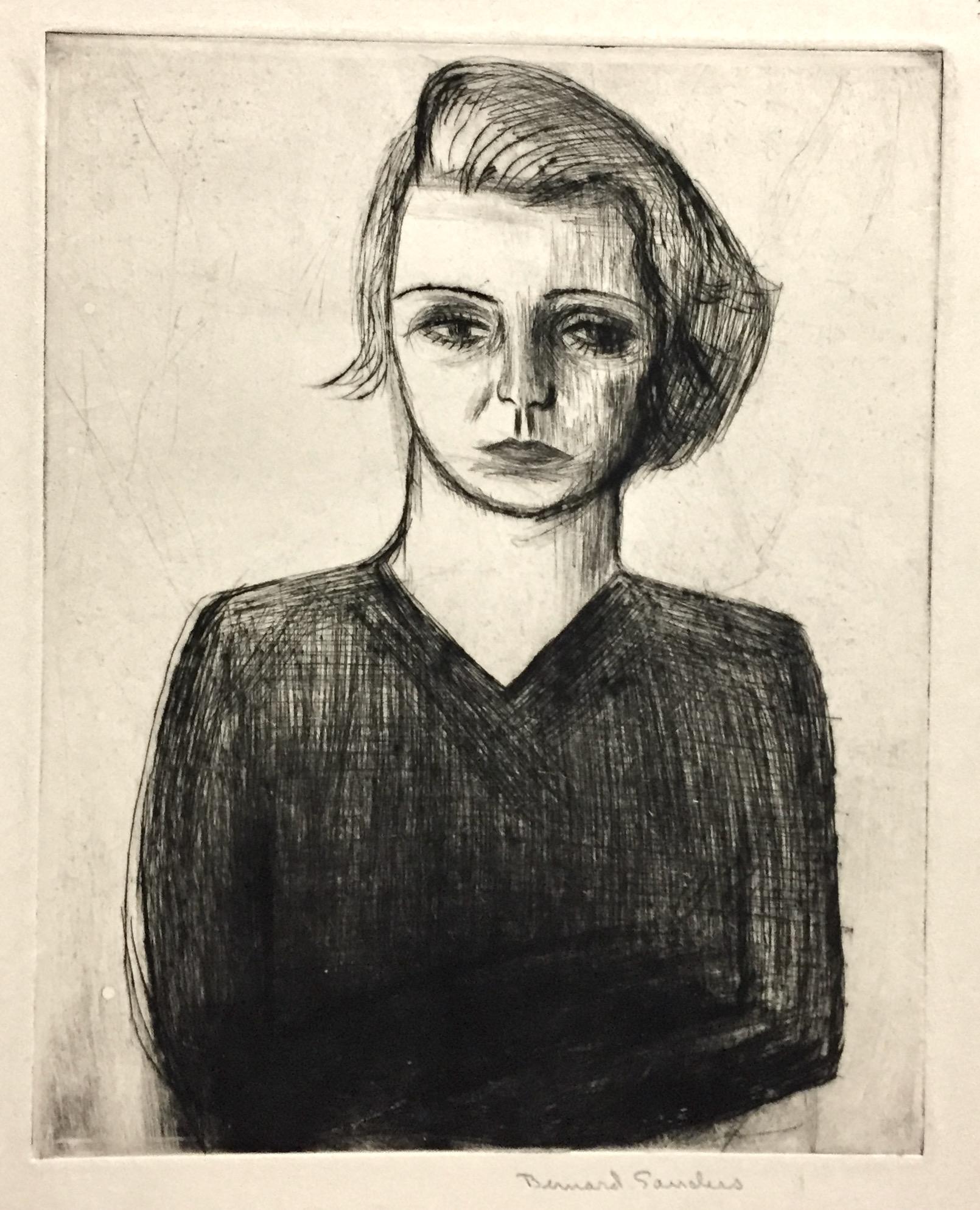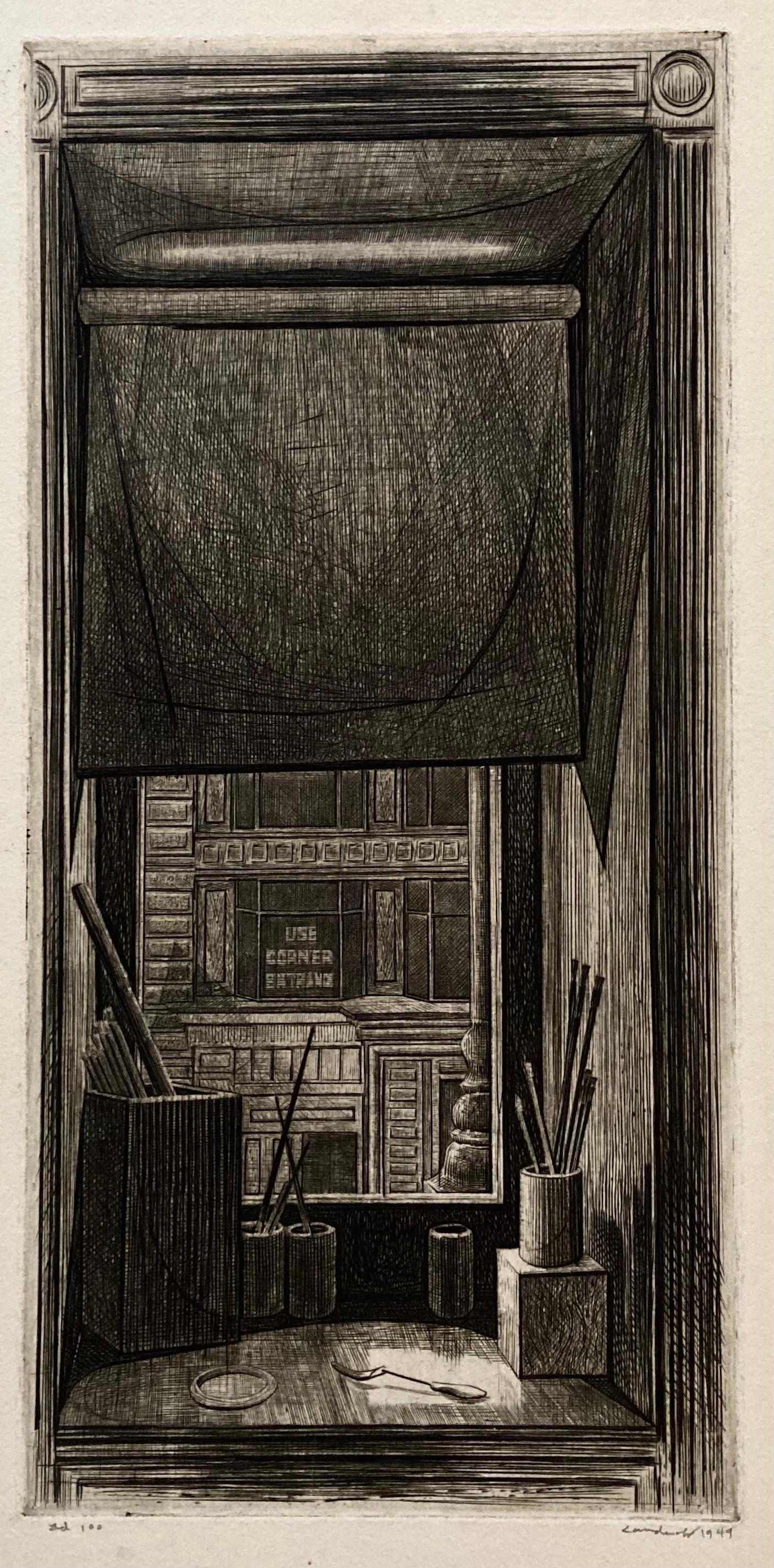Items Similar to Bernard Sanders, (Interior with Five Men)
Want more images or videos?
Request additional images or videos from the seller
1 of 5
Bernard SandersBernard Sanders, (Interior with Five Men)1925, about
1925, about
About the Item
The always fashionable Bernard sanders draws a mysterious spaces with well-dressed gentlemen. Signed in pencil.
- Creator:Bernard Sanders (1906 - 1967)
- Creation Year:1925, about
- Dimensions:Height: 5.88 in (14.94 cm)Width: 7.5 in (19.05 cm)
- Medium:
- Movement & Style:
- Period:
- Condition:Very good condition. Old hinges at top edge.
- Gallery Location:New York, NY
- Reference Number:1stDibs: LU141027143592
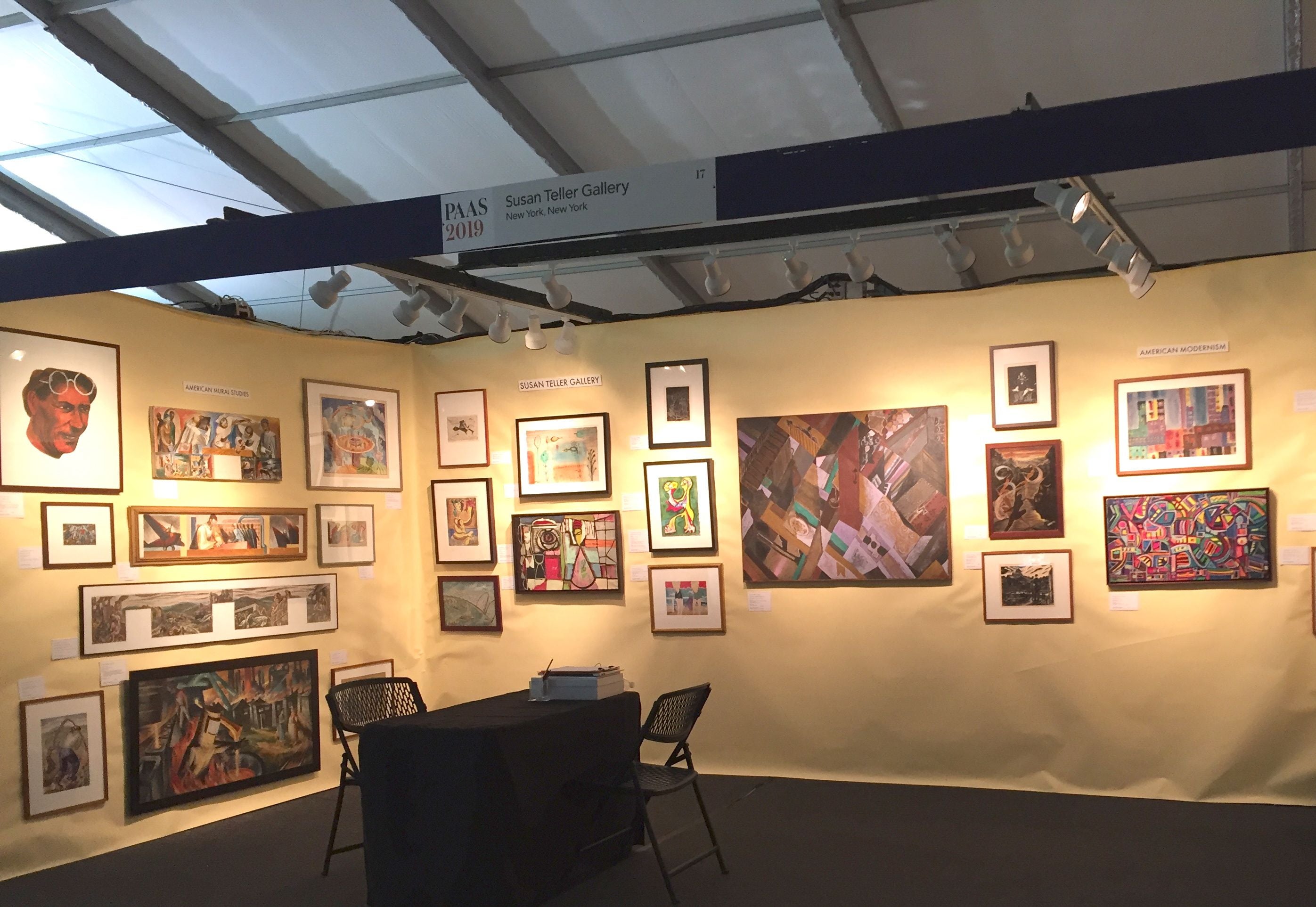
About the Seller
5.0
Gold Seller
These expertly vetted sellers are highly rated and consistently exceed customer expectations.
Established in 1988
1stDibs seller since 2020
86 sales on 1stDibs
Typical response time: 3 hours
- ShippingRetrieving quote...Ships From: New York, NY
- Return PolicyA return for this item may be initiated within 7 days of delivery.
More From This SellerView All
- Bernard Sanders, (Nude Woman with Orb)Located in New York, NYSander's figures are captivating. Here a women stands facing right, just touching, and holding still, a globe shape, on a flat surface. It was difficult getting the color to show p...Category
Early 20th Century American Modern Interior Prints
MaterialsDrypoint, Etching
- Bernard Sanders, (Lovers)Located in New York, NYClearly Sanders (1906-1967) was a master at these minimalist figurative prints. It's all about atmosphere and tension. Perhaps reflecting the print here, (Lovers), he, in fact, w...Category
Early 20th Century American Modern Interior Prints
MaterialsEtching, Drypoint
- Bernard Sanders, Head of GirlLocated in New York, NYFor a print that's nearly one hundred years old it feels very contemporary. Signed in pencil; titled in lower margin in pencil.Category
Early 20th Century American Modern Interior Prints
MaterialsDrypoint
- Bernard Sanders, (Mesopotamian Figure)Located in New York, NYClearly Sanders was looking at ancient Mesopotamian figures. Even the elaborate feathered wings can be found there -- made about 5000 years ago! There's an initial 'S' in the plate...Category
Early 20th Century American Modern Interior Prints
MaterialsEtching, Drypoint
- Armin Landeck, Window on 14th StreetBy Armin LandeckLocated in New York, NYThe reference number on this work is Kraeft 103. It's from an edition of 100 and is signed, dated, and numbered, in pencil. Always an intaglio printmaker, Landeck switched from a more atmospheric drypoint technique to engraving while working at Stanley William Hayter's New York Atelier 17, in the 1940s. This print combines the forceful engraved diagonals with the softer drypoint lines. This is a view from the artist's window at the Delmonico Hotel, 3 East 14th Street...Category
Mid-20th Century American Modern Figurative Prints
MaterialsEngraving, Drypoint
- Bernard Sanders, (Fantastic City)Located in New York, NYThis extravagant subject is a clear exception in the oeuvre of Bernard Sanders. Signed in pencil; interestingly signed in the plate at the upper right ...Category
Early 20th Century American Modern Interior Prints
MaterialsEtching
You May Also Like
- Interiors I: Family Reunion — A penetrating scene with a hidden homage to EadweaBy Peter MiltonLocated in Middletown, NYInteriors I: Family Reunion 1984 Resist ground etching and engraving on BFK Rives wove paper, 20 x 36 inches (501 x 913 mm), full margins. Signed, titled, dated and numbered 49/175 in pencil, lower margin. In excellent condition with minor mat tone. A luminous, rich, and well-inked impression of this haunting image, with astonishing detail and depth. Framed handsomely under museum grade glass with archival materials in a solid wood frame with silver finish. [Milton 107] Intended to be a stand alone image in its inception, Family Reunion ended up spawning seven additional images, and became a sort of Primo Pensiero in the sprawling, masterpiece suite now known as Interiors. The suite took eight years to complete, and consists of works of varying format, psychological intensity, and subject matter. The thematic darkness in the eight images waxes and wanes, and Milton intentionally included several interlude works to lighten the tension he felt while composing several of the darker images. The first two in the series, Family Reunion, and Hotel Paradise Café, were meant to be companion pieces. The equilibrium of each composition is anchored on a central brooding figure; a man (perhaps based on a Thomas Eakins portrait of the American anthropologist Frank Hamilton...Category
1980s American Modern Figurative Prints
MaterialsEngraving, Etching
- Interiors VII: The Train from MunichBy Peter MiltonLocated in Middletown, NYInteriors VII: The Train from Munich Robert E. Townsend, 1991. Resist ground etching and engraving with hand refinement in charcoal, pencil, stabilo, and eraser on BFK Rives white wove paper, 20 x 36 inches (507 x 914 mm), full margins. Signed, titled, dated and numbered 51/175 by the artist in pencil, lower margin. A brilliant, inky impression with luminous light and gradient tones. In excellent condition with one extremely minor and superficial spot of light tan adhesive residue on the verso, unobtrusive and not visible on the recto, with no other visible defects. With the blind stamp of the printer, Robert E. Townsend in the lower left margin. An especially fine impression in superb condition. [Milton 113]. When asked about this work in particular, Milton expressed that his favorite images were his darkest images, in theme, mood, and in ink. Milton, who has said that his work is infused with a postmodern awareness of the past, has focused here in a deeply personal way on a segment of history that continues to haunt us all. The work, published in 1991, evokes one of the darkest periods of European history, the eroding and erasing of European culture under fascism, and the eventual total loss of humanity. The Train from Munich is an especially relevant and emotional work for Milton, who created the piece for his wife, Edith, who escaped Munich in 1939 as a child on the fabled Kinderstransport. The Kinderstransport was a desperate rescue effort on the part of the British government to save as many Jewish children as possible by railway before borders closed on the precipice of the Second World War. Children left their parents behind, and boarded the trains alone, leaving the impending doom of Nazi Germany, they arrived in Great Britain as refugees. More than 10,000 children escaped the holocaust via the Kinderstransport. In Train from Munich, the image itself holds an almost immeasurable amount of symbolism; each inch of the matrix is a successful effort to confront this history in a way that is poignant through a series of motifs. We see the Café disappearing into a ghostlike memory of the past, an allegory to the disintegration of culture, while through the windows we can see a rampant, snarling dog; a portrait of Hitler's shepherd, Blondi. Blondi isn't the only notable figure in the composition. Milton has pointed out that the fading figure of the doorman at the Hotel Metropole is modeled after the artist and intellectual Marcel Duchamp, and the face of the young girl peering...Category
1990s American Modern Interior Prints
MaterialsCharcoal, ABS, Engraving, Etching
- Points of Departure II: Nijinsky VariationsBy Peter MiltonLocated in Middletown, NYPoints of Departure II: Nijinsky Variations Robert E. Townsend, 1996 Resist-ground etching and engraving on BFK-Rives paper, 24 x 38 inches (618 x 965 mm), full margins. Signed, ti...Category
1990s American Modern Figurative Prints
MaterialsEngraving, Etching
- Adele and the Ladies (Rochester's fashion conscious ward in Jane Eyre)By Fritz EichenbergLocated in New Orleans, LAAdele, the 10 year-old girl who may be the daughter of Rochester and Celine in "Jane Eyre" is being scrutinized by three women. One is seated on an ornate sofa...Category
Early 20th Century American Modern Figurative Prints
MaterialsWool, Engraving
- The SmithyBy Sir David Young Cameron, R.A.Located in Middletown, NYA warm composition, in theme and tone; the creaky timber interior of a 19th century Scottish blacksmith's shop. Etching and drypoint on cream laid Japan paper, 8 x 10 inches (202 x ...Category
Late 20th Century Modern Interior Prints
MaterialsLaid Paper, Drypoint, Etching
- Vin Rouge (Red Wine)By Edmund BlampiedLocated in Storrs, CT1932. Drypoint. Appleby 167. 9 1/4 x 11 5/8 (sheet 11 3/8 x 17 15/16). Edition 100 #48. Mat line, well outside the image; otherwise excellent condition. A rich impression with drypo...Category
1930s Modern Interior Prints
MaterialsDrypoint
